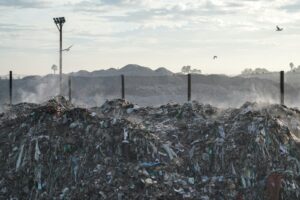Resource efficiency in Europe: benefits of doing more with less
Many European countries are realising the economic benefits of making more efficient use of material resources like metals, fossil fuels and minerals.
But more action is needed to underpin this trend in resource efficiency with stronger policies on energy, material resources, waste management and on circular economy. These are the findings from a new European Environment Agency (EEA) assessment.
The EEA report More from less – material resource efficiency in Europe, takes an in-depth look at national approaches and policies on resource efficiency and explores similarities and differences in related policies, strategies and targets. The report builds on a survey, in which 32 of the 39 EEA member and cooperating countries took part. Countries provided detailed information on their resource efficiency polices and examples of good practice initiatives.
The main objective of the report is to encourage countries to share information and their experiences in the development of resource efficiency policies. The work contributes to broadening know-how on resource efficiency and the circular economy and increases understanding of policy approaches in these areas.
Between 2000 and 2014, resource use in the European Union as a whole fell both in absolute terms (down by 12%) and per person (from 15.5 to 13.1 tonnes per person), according to the survey. The economic benefit of improving resource efficiency is the most important driver in many countries, indicating that the logic of doing more with less has been widely embraced. The most recurrent drivers to improve efficiency were the desire to increase competitiveness, to secure the supply of raw materials and energy and reduce dependence on imports, and to lower pressures on the environment.
The report stresses that the key challenge will be to ensure that the recent gains in efficiency are sustained, and that the situation does not revert to the long-term pattern of economic growth accompanied by increasing resource use. The survey also concludes that there is room for improvement in policy design and implementation, as well as significant potential benefit in the exchange of good practice, since big differences between countries still exist.
The report and the accompanying 32 individual country profiles were produced together with the EEA’s network of member and cooperating countries, known as Eionet and the European Topic Centre on Waste and Materials in a Green Economy (ETC/WMGE).
Key findings:
- Only three countries, Austria, Finland and Germany, adopted dedicated national strategies for material resource efficiency. Two further countries have dedicated strategies at a regional level, in Flanders (Belgium), and Scotland (UK)
- Most of the improvements in resource productivity occurred between 2007 and 2014, although not necessarily as a result of a comprehensive policy intervention. The gains were mostly due to the sharp decline in construction activity as a result of the economic crisis that started in 2007-2008, which led to huge falls in material use, but had rather limited impact on gross domestic product
- A majority of countries (26) identified certain waste streams and secondary materials as the most common group of priority materials. Key waste streams are plastic and packaging (17 countries), construction and demolition waste (16 countries), and food waste (15 countries). Energy sources, like fossil fuels and including renewables, were mentioned by 18 countries as priority resources
- Manufacturing was singled out most frequently as the key economic sector for improving material resource efficiency, followed by agriculture and forestry, construction, and waste management
- The service sector — currently accounting for some 70–75 % of GDP in most European countries — is potentially significant with respect to material use and the resource efficiency of the economy. However, very few countries mentioned service-oriented sectors among their priorities for improving material resource efficiency
- Nine countries have adopted targets for national material resource efficiency: Austria, Estonia, France, Germany, Hungary, Latvia, Poland, Portugal and Slovenia. In most cases, these targets are based on gross domestic product relative to domestic material consumption (GDP/DMC) — the EU’s lead resource productivity indicator
- Germany, the Netherlands, and the region of Flanders (Belgium) reported having a dedicated circular economy strategy, which aims to create a production and consumption system that generates little waste and keeps materials in use for as long as possible. Several countries acknowledge the need to move away from the current linear economic model and stated that the circular economy and closing material loops are already policy priorities. The majority of reported policy initiatives related to the circular economy focus on waste management, with only a few examples going beyond increasing recycling rates and a higher use of secondary raw materials.















